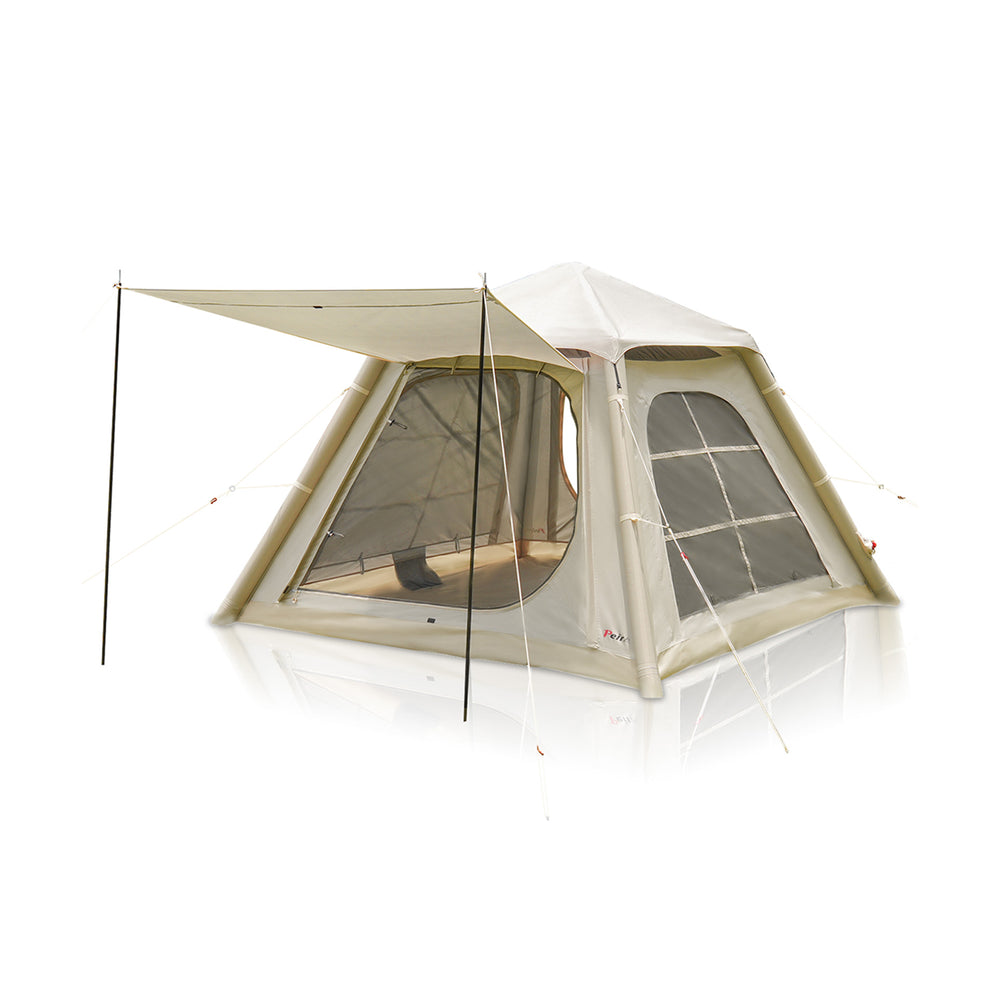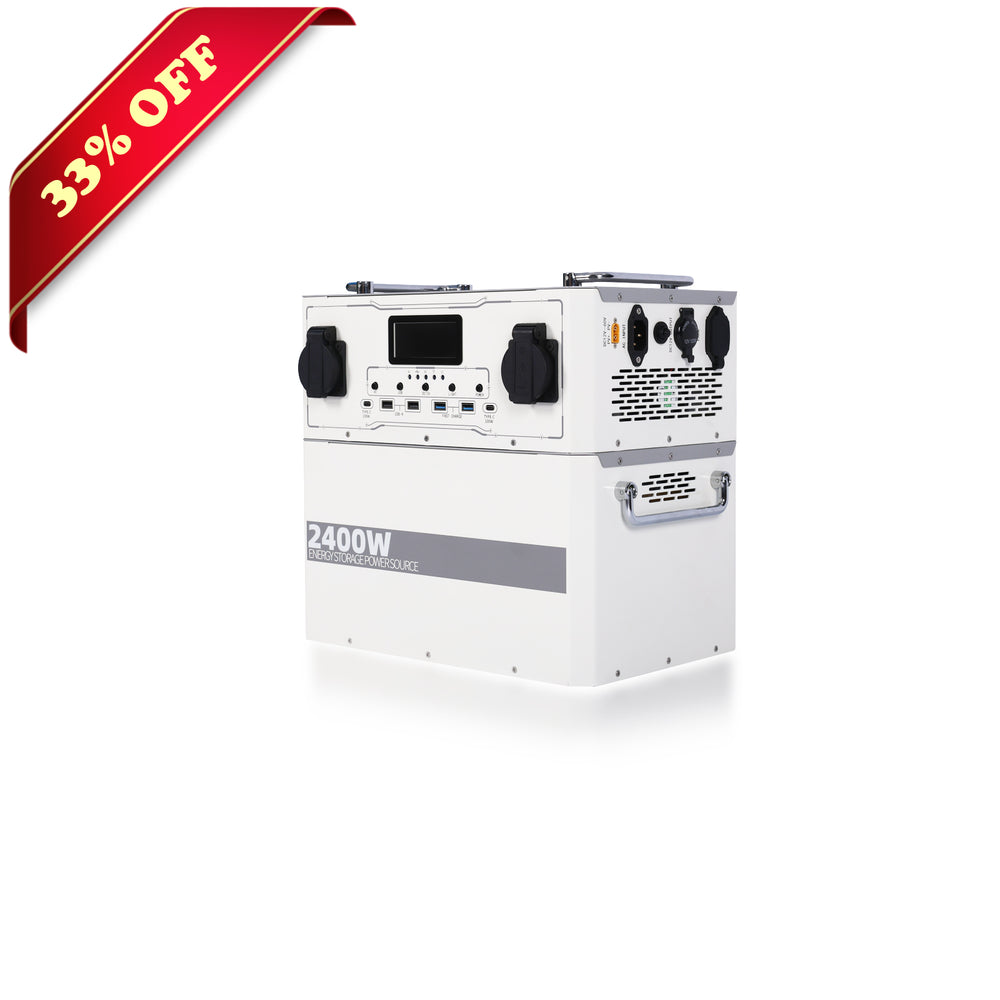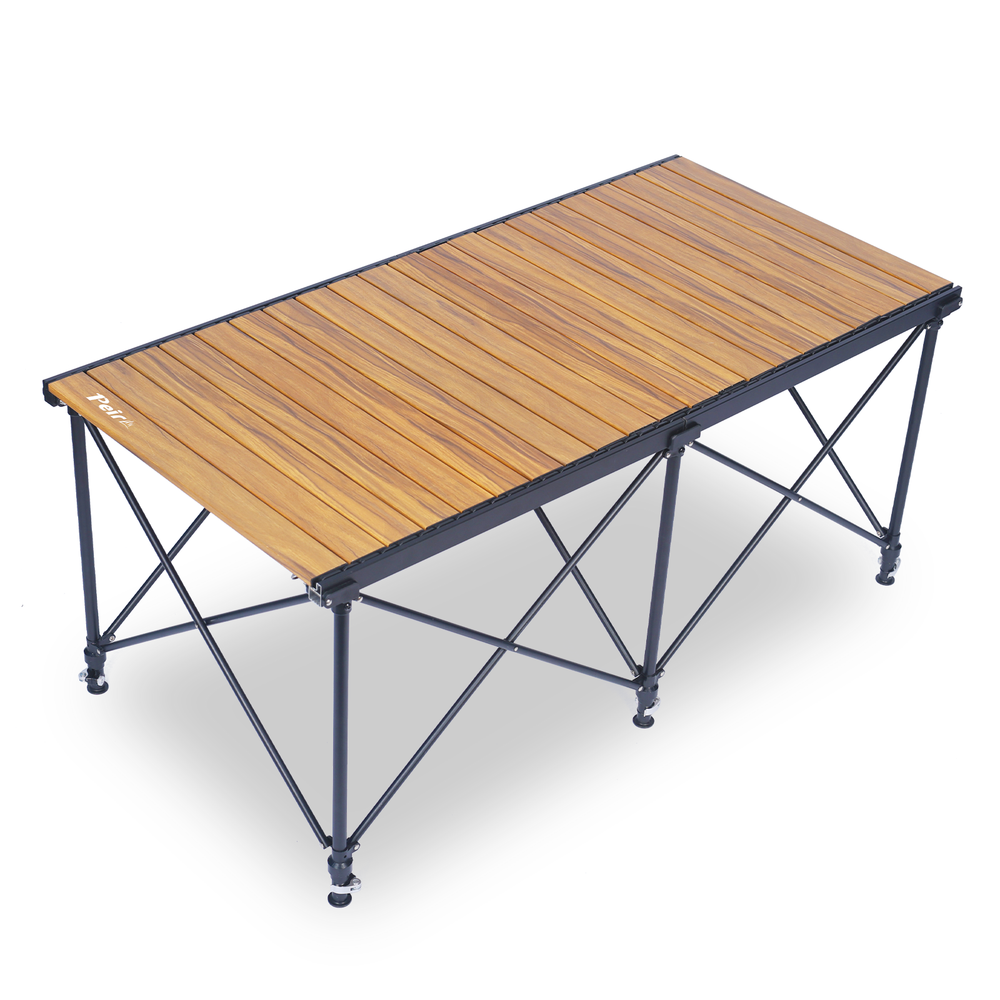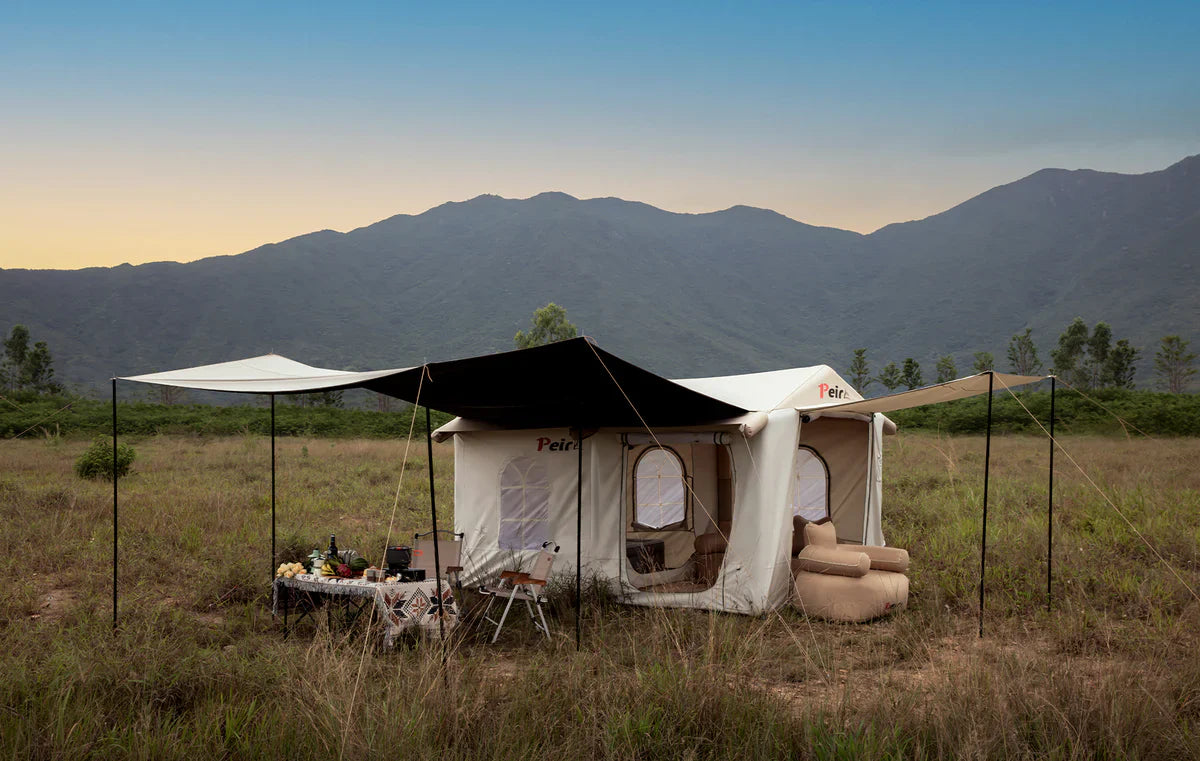When planning a camping trip in cold weather, one of the first things to consider is whether your tent will keep you warm and protected. Inflatable tents are becoming more popular, but are they good for cold weather? Let’s break it down and determine if they are the right choice for your winter adventure.
What Are Inflatable Tents?
Before diving into the pros and cons, let’s quickly explain what inflatable tents are. Instead of traditional poles, these tents use inflatable beams to create the structure. You pump air into the beams, and the tent stands up. They’re designed to be easy to set up, which is one of the reasons people love them. But how do they perform in cold weather?
Insulation and Warmth
One of the biggest concerns with camping in the cold is staying warm. Inflatable tents, like most other tents, are made from materials like nylon or polyester. These materials don't offer much insulation on their own. Hence, the warmth inside the tent depends heavily on your sleeping gear and the tent's ability to block the wind.
Inflatable tents tend to have a bit more flexibility compared to traditional tents. This means they can handle moderate winds without snapping poles. However, it’s important to note that their walls are usually thin, so they won’t trap heat effectively. To stay warm, you’ll need a good sleeping bag and maybe even a portable heater.
Stability in Winter Conditions
When it comes to harsh winter weather, such as snow or strong winds, stability is key. Inflatable tents are generally strong, but they can have a harder time dealing with heavy snow compared to tents with solid poles. If too much snow piles up on the roof, it can cause the tent to sag or even collapse if the air beams deflate. This is something to be cautious of if you're camping in an area where heavy snow is expected.
However, many inflatable tents are made with sturdy materials and are designed to handle light snow and moderate winds. They also tend to be more stable than some traditional tents when it comes to gusty conditions, as the flexible air beams can bend without breaking.
Recommended reading:
Ease of Setup in Cold Weather
One of the best things about inflatable tents is how easy they are to set up. In cold weather, the last thing you want to do is spend a long time wrestling with poles while your fingers freeze. With an inflatable tent, you just unpack, pump it up, and you’re done in a matter of minutes.
However, there is one thing to keep in mind. The air inside the beams can contract in very cold temperatures, which could cause the tent to lose some of its firmness. To avoid this, you may need to add more air as the temperature drops. Bringing a hand pump along on your trip is a smart move.
Durability in Cold Conditions
Another factor to consider is the durability of the tent fabric and air beams in freezing temperatures. Most inflatable tents are designed for three-season use, meaning they’re built for spring, summer, and fall. If you're planning to camp in the winter, make sure the tent is rated for cold weather. Some tents come with reinforced fabrics or extra layers that can withstand colder conditions.
While inflatable beams are durable in general, very low temperatures might make some materials more prone to damage. It’s always a good idea to check the manufacturer's guidelines and ensure your tent is up to the task of winter camping.
Condensation Issues
In cold weather, condensation can be a big problem inside tents. Since inflatable tents usually have less ventilation than some traditional models, moisture from your breath can build up on the inside of the tent walls. This can make the inside feel damp and chilly, which is the last thing you want on a cold night.
To combat this, look for an inflatable tent that offers good ventilation options, like mesh windows or vents that allow airflow without letting cold air blast through. Opening these slightly during the night can help reduce condensation.
Are Inflatable Tents Good for Cold Weather?
In general, inflatable tents can work in cold weather, but they do come with some limitations. They’re easy to set up, stable in moderate winds, and can handle light snow. However, they don’t offer much insulation, and very heavy snow could be a problem. If you’re planning to camp in extreme winter conditions, you might want to look for a tent specifically designed for cold weather.
To get the most out of your inflatable tent in winter, invest in high-quality sleeping gear, keep an eye on snow buildup, and make sure the tent has proper ventilation. With the right preparation, an inflatable tent can provide a comfortable and enjoyable cold-weather camping experience.
FAQs
Can I use an inflatable tent in freezing temperatures?
Yes, you can use an inflatable tent in freezing temperatures, but it’s essential to choose one that is rated for cold weather. Be aware that the air inside the beams might contract in the cold, so you may need to add more air during your trip. It’s also important to have proper sleeping gear, as the tent itself doesn’t provide much insulation.
Will an inflatable tent collapse under snow?
Inflatable tents can handle light snow, but if a heavy amount piles up on the roof, it could cause the tent to sag or collapse. To avoid this, periodically clear snow from the tent and ensure it remains properly inflated. If you’re camping in an area with a lot of snow, a traditional tent with solid poles might be a safer option.
Are inflatable tents as warm as traditional tents?
Inflatable tents are not inherently warmer than traditional tents. They are typically made from similar materials, which do not provide much insulation. Staying warm in an inflatable tent relies on your sleeping bag, additional layers, and possibly a portable heater.
Do inflatable tents have condensation problems in cold weather?
Yes, condensation can be an issue in inflatable tents, especially in cold weather when ventilation is limited. The key to reducing condensation is ensuring proper airflow. Look for tents with mesh windows or vents, and keep them slightly open to allow moisture to escape without letting too much cold air inside.
How easy is it to set up an inflatable tent in cold weather?
Inflatable tents are very easy to set up, even in cold weather. All you need to do is unpack the tent, pump air into the beams, and it’s ready to go. This process is much quicker than assembling poles in freezing conditions, making inflatable tents a convenient choice for cold-weather camping.
Are inflatable tents durable in winter conditions?
Inflatable tents are generally durable, but it’s important to check if the tent is specifically designed for winter use. Some models may not handle extreme cold or heavy snow well, so always look at the manufacturer’s recommendations. Inflatable beams are sturdy, but freezing temperatures can affect some materials over time.
How do I maintain the air pressure in an inflatable tent during a cold-weather trip?
In cold weather, the air inside the tent’s beams can contract, causing the tent to lose some firmness. To maintain proper structure, you should bring a hand pump and add air as needed throughout your trip. Check the pressure regularly, especially if temperatures drop overnight.
Are inflatable tents a good investment for winter camping?
If you plan to do light winter camping with moderate weather, inflatable tents can be a good investment. They’re easy to set up, stable, and versatile. However, if you’re expecting extreme cold or heavy snow, you might want to consider a more specialized winter tent with solid poles for better insulation and stability.












 Peirhw Inflatable House Tent - Starry Night Love
Peirhw Inflatable House Tent - Starry Night Love
 Peirhw Glamping Tents - Friendship Castle
Peirhw Glamping Tents - Friendship Castle
 Peirhw Inflatable Canopy Tent - Adventurer
Peirhw Inflatable Canopy Tent - Adventurer



 Peirhw Portable Air Conditioner
Peirhw Portable Air Conditioner
 【Advance Sale】Peirhw Portable Power Station 2400W
【Advance Sale】Peirhw Portable Power Station 2400W
 【Advance Sale】Peirhw Portable Power Station 600W
【Advance Sale】Peirhw Portable Power Station 600W





 Peirhw Self Inflating Sleeping Pad
Peirhw Self Inflating Sleeping Pad
 Peirhw Air Mattress (8" Queen Type)
Peirhw Air Mattress (8" Queen Type)
 Peirhw Camping Sleeping Bag
Peirhw Camping Sleeping Bag


 Peirhw Butterfly-shaped Canopy for Camping
Peirhw Butterfly-shaped Canopy for Camping
 Peirhw Camping Waterproof Canopy (Cannot be Purchased Separately)
Peirhw Camping Waterproof Canopy (Cannot be Purchased Separately)


 Peirhw Outdoor Folding Chairs
Peirhw Outdoor Folding Chairs
 Peirhw Folding Camping Table
Peirhw Folding Camping Table












